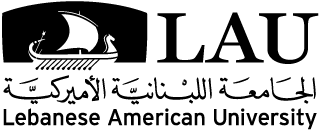Courses
Statistics Courses
STA102 Basic Mathematical Statistics
[3–0, 3 cr.]
This course includes counting (permutation and combination), basic probability, conditional probability (Bayes’ rule) and commonly used probability distributions such as the binomial distribution (discrete) and the normal distribution (continuous).
The course also covers the nature of statistics, random variables, data organization (such as Pie chart, Bar Graph and Histograms) and descriptive measures (range, mean, median, mode and standard deviation). The student will be exposed to tools such as Excel and SPSS. Applications to social sciences are covered through case studies.
STA205 Biostatistics
[3–0, 3 cr.]
This course introduces the statistical design and analysis techniques needed to perform pharmaceutical research, and evaluate clinical data. It includes designing epidemiologic and clinical studies, evaluating diagnostic testing procedures, interpreting the use of statistical data in Medical Literature, and using frequently used statistical methods of data analysis. Emphasis is placed on the statistical concepts, and their application to the critical appraisal of clinical and experimental data.
STA302 Introduction to Statistics in Social Sciences
[3–0, 3 cr.]
This course is an introduction to statistical analysis for the social and behavioral sciences. It covers both descriptive and inferential statistics. Descriptive statistics covers ways of representing data graphically, measures of central tendency and dispersion, the normal distribution and other types of standard scores as well as an introduction to probability and sampling. The inferential statistical tests addressed in the course cover ratio, ordinal and categorical variables. The course deals with inferential tests involving one, two or more means, proportions, and correlations. It also considers the basic analysis of variance models (ANOVA), linear regression models and non-parametric tests such as chi-square. Students will develop sufficient conceptual understanding to select from a variety of statistical tests appropriately. In addition, students will learn to use a statistical software package to enter data and conduct a range of statistical analyses.
